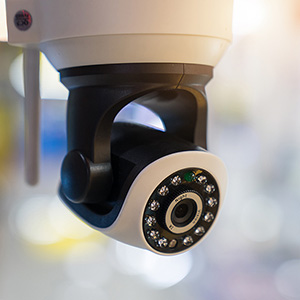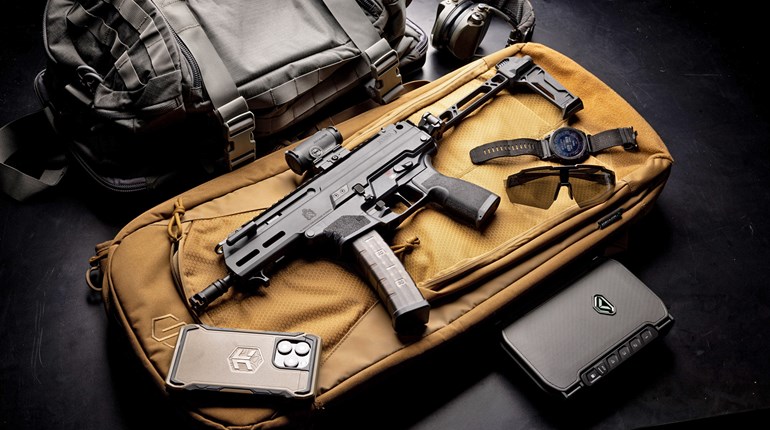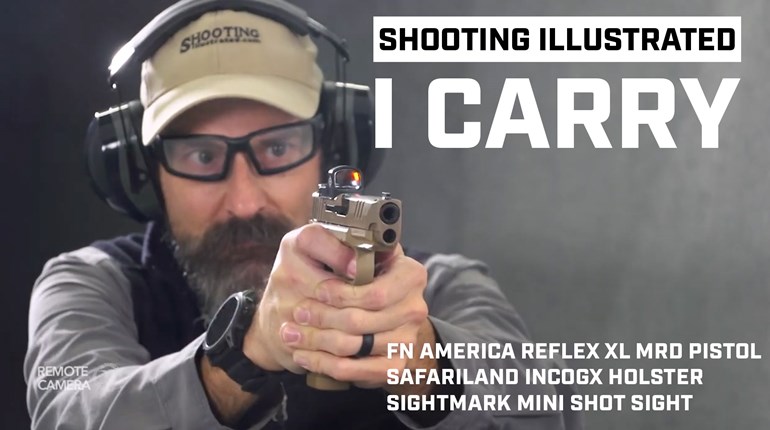
In today’s ever-changing world, you are your own protective agent for yourself and your family. As such, what are the best practices of protective-services professionals that you can use to solve challenging threat-engagement problems involving the protection of others? The first step to learning these best practices is to understand the difference between the skills of a “bodyguard” and those of a “protective-services professional.”
In a world where security concerns are ever more prevalent, the demand for protection has soared to unprecedented heights. Whether it’s safeguarding a high-profile individual like a politician or entertainer, securing a sensitive location or ensuring the safety of a corporate executive, the need for personal-security services has become a ubiquitous necessity.
However, amidst this necessity lies a crucial distinction often overlooked by those outside the protection industry: the disparity between a mere bodyguard and a meticulously trained protective-services professional.
“Bodyguard” vs.“Protective-Services Professional”
At first glance, the terms “bodyguard” and “protective-services professional” might seem interchangeable. Both involve the task of ensuring the safety and security of a protectee, yet their approaches and capabilities diverge quite significantly.
A bodyguard, in its conventional sense, typically embodies a more basic level of security provision. Traditionally associated with physical prowess and a no-nonsense demeanor, a bodyguard’s primary function revolves around deterrence and immediate response to perceived threats. Their skill set often includes combat training, proficiency in defensive tactics and a heightened sense of situational awareness. While undeniably valuable in certain contexts, this traditional role often lacks the depth and sophistication required to navigate the multifaceted landscape of modern security challenges.
On the other hand, a trained protective-services professional operates on an entirely different echelon of expertise and capability. Beyond physical strength and combat proficiency, these professionals undergo extensive training in risk assessment, crisis management and strategic planning. Their role extends far beyond the mere physical protection of their clients; it encompasses a comprehensive approach to security that addresses vulnerabilities on multiple fronts.
Moreover, protective-services professionals often undergo specialized instruction in areas such as executive protection, threat-intelligence analysis and emergency medical response. This breadth of expertise enables them to adapt seamlessly to a diverse range of security scenarios, from high-stakes diplomatic missions to discreet corporate-protection details. In addition to their specialized skill set, protective-services professionals exhibit a distinctive approach to security characterized by strategic thinking and adaptability.
While a bodyguard’s primary focus is on immediate threat response and physical protection, a trained professional adopts a more proactive and preemptive stance. Protective-services professionals possess the flexibility and adaptability to navigate complex security environments effectively. Whether it’s coordinating with local law-enforcement agencies, liaising with intelligence assets or managing logistical challenges, they exhibit a level of professionalism and poise that transcends the traditional role of a bodyguard.

In the realm of personal security, the distinction between a bodyguard and a trained protective-services professional is more than a matter of semantics; it represents a paradigm shift in the way we perceive and approach various security challenges.
The bodyguard relies predominantly on reactive measures, or “hard skills,” such as defensive driving, tactics, firearm usage and the like. Whereas you, acting as the de facto family protector, can emulate the professional by applying “soft skills,” which are proactive measures embracing a holistic approach to security that encompass not only physical protection, but also risk assessment, crisis management and interpersonal rapport.
Embracing a holistic approach, the protective-services professional makes skilled threat assessments from an ability to process relevant information. The most basic of these soft skills is protective intelligence. Protective intelligence is a proactive and strategic approach to identifying, assessing and mitigating potential threats to individuals, organizations or assets. At its core, protective intelligence seeks to anticipate and prevent security breaches, harassment, violence or other harmful activities directed toward your protectees or their interests. This proactive stance involves collecting and analyzing information from various sources to identify potential risks and vulnerabilities, allowing you to implement appropriate measures to mitigate or neutralize threats before they materialize.
Use Your Intelligence
Protective intelligence encompasses a wide range of activities, including:
Threat Assessment: This consists of evaluating potential threats based on factors such as your protectee’s profile, affiliations, past incidents, geopolitical dynamics and emerging trends. This process involves gathering intelligence from open sources, social media, law enforcement databases and human-intelligence networks when available. Applied to your protectee, is there anyone out to get them? Are there any known adversaries or threats made against the person or people you must protect?
Vulnerability Analysis: This analysis identifies weaknesses in the client’s security posture, infrastructure or operational procedures that could be exploited by malicious actors. This may involve physical security assessments, cybersecurity audits and comprehensive-risk analyses. A vulnerability analysis would apply to your home, office or car. At home, for example, do you leave any tools or ladders on your property that can be used by an intruder to break into your home?
Surveillance Detection: Here, we are implementing measures to detect and deter hostile surveillance activities aimed at gathering information or planning an attack. This includes training other family members to recognize suspicious behavior, conducting periodic sweeps of sensitive areas and utilizing technology such as cameras, motion sensors and other intrusion-detection systems. As the well-known saying goes, forewarned is forearmed.

Counterintelligence: This refers to identifying and neutralizing efforts by adversaries to gather intelligence or infiltrate the client’s organization. This may involve conducting background checks on personnel, monitoring for insider threats and implementing security protocols to safeguard sensitive information. Closer to home, this would mean being cognizant of the information you and your family may put out on your social-media platforms, like going on vacation and awareness of who may be trying to phish for information.
Crisis Management: You should be developing contingency plans and response protocols to effectively manage security incidents or emergencies. This includes coordinating with law enforcement agencies, emergency services and other stakeholders to ensure a swift and coordinated response to potential threats or crises. Applied at home, do you have an emergency action plan (EAP) in the event of a natural disaster, fire or home invasion? If so, what are the roles and responsibilities of each family member under such dynamic and specific circumstances? But there’s more to it than that. Even if you have an EAP, do you practice or run drills to ensure operational integrity at a moment’s notice?
Protective intelligence serves as a proactive and dynamic framework for protecting individuals, organizations and assets in an increasingly complex and unpredictable security environment. By leveraging intelligence gathering, risk assessment and strategic planning, you can mitigate risks, protect against potential threats and preserve the safety and well-being of your protectees.
The Readiness Is All
Paramount to any protective-services professional is the indispensable soft skill of situational awareness (also known as SA), which is simply looking around. Although part and parcel of its overall operational functionality, there is far more depth and bandwidth made available by SA as a soft skill to the protective-service professional.
Situational awareness refers to the ability to perceive, comprehend and anticipate the elements and dynamics of one’s surroundings or environment. It involves being attuned to relevant information, understanding its significance and effectively using that understanding to make informed decisions and take appropriate action.
Situational awareness is the currency that buys you time and opportunity. It places you at the front of the action-reaction power curve and typically involves three components:
Perception: The first step in situational awareness is the ability to perceive relevant information from the environment through sensory inputs such as sight, sound, touch and smell. This includes being aware of both the immediate surroundings and the broader context in which events are unfolding. Perception can also include “tells” (a common-law term applied by law enforcement professionals describing body language and the way a person’s physical presence is displayed), which may indicate that someone is carrying a weapon or perhaps may have an accomplice. Last but certainly not least is an intuitive hit or “gut feeling” that tells you something is up. Regardless of how it may be received, any blip on the SA radar warrants your attention.
Comprehension: Once relevant information is perceived, the professional then processes and understands its meaning and significance. This involves interpreting the data considering existing knowledge, experience and objectives, as well as recognizing patterns, trends or anomalies that may be indicative of potential threats or opportunities.
Projection: The final component of SA involves projecting potential future developments or outcomes based on the current understanding of the situation. This requires the ability to anticipate potential changes, risks or contingencies, all while adapting accordingly.
Effective SA relies on factors such as attention management, cognitive processing, memory and decision-making skills. It also requires the ability to maintain a broad perspective while simultaneously focusing on relevant details and priorities. In practical terms, SA enables you to identify potential hazards in your principal’s environment and take proactive measures to mitigate risks, anticipate changes or developments that may impact your objectives or goals and adjust plans or strategies accordingly. It allows the protective-services professional to recognize opportunities for improvement, innovation or collaboration and capitalize on them to achieve desired outcomes, as well as enabling you to rapidly respond to unexpected events or emergencies.
The distinction between event indicators and threat indicators lies in their respective roles in identifying and responding to potential risks or hazards within a protective-services context. Event indicators are signs or signals that suggest the occurrence or impending occurrence of a specific event or incident. These indicators are often observable or measurable phenomena that serve as early-warning signs of a potential threat or problem. Event indicators can take various forms depending on the nature of the event being monitored and the context in which it occurs. For example, in the context of cybersecurity, event indicators may include unusual network activity, unauthorized access attempts or anomalies in system logs. In physical security, event indicators could include suspicious behavior, unauthorized individuals loitering near a sensitive area or the presence of unidentified objects or packages.
The primary function of event indicators is to alert security personnel or systems to the possibility of an impending event so that appropriate actions can be taken to prevent or mitigate its impact. Event indicators are often used in conjunction with threat indicators to provide a comprehensive picture of the security environment and enable timely responses to emerging risks.
Threat indicators, on the other hand, are factors or characteristics associated with potential threats or hazards that may pose harm to individuals, organizations or assets. Unlike event indicators, which focus on specific incidents or events, threat indicators are broader in scope and encompass a range of potential threats and risks. Threat indicators can include various elements such as intent, capability, opportunity and behavioral patterns.
Intent is the motivations or objectives of potential adversaries, such as criminal organizations, terrorist groups or hostile actors. Capability is the resources, tactics and techniques that adversaries possess or may employ to carry out threats, such as weapons, technology or specialized skills. Opportunity is the conditions or circumstances that may facilitate the occurrence of threats, such as vulnerabilities in security systems, lapses in surveillance or gaps in response procedures. Behavioral patterns are patterns of activity or behavior exhibited by potential threats, such as reconnaissance activities, suspicious communications or coordination efforts.
Let's Be Particularly Careful Out There
Threat indicators help security professionals assess the likelihood and severity of potential threats and develop appropriate risk-management strategies to address them. By monitoring and analyzing threat indicators, professionals can better understand the nature of the risks they face and implement proactive measures to prevent or mitigate potential harm.
As the de facto protective agent of your family, you are offered three choices:
1: Do nothing. Sit there and hope that nothing bad happens.
2: Be a bodyguard. Look intimidating, act as a deterrent based on your physical prowess and rely on reactive measures such as hard skills (hand-to-hand, firearms, etc.) as your one and only response option.
Or 3: Be like a protective-service professional and apply your soft skills as described for optimal proactive measures in threat avoidance or mitigation.
All protective services pros know and understand from practical experience that the more often you apply your soft skills, the less you will ever need your hard skills.
































